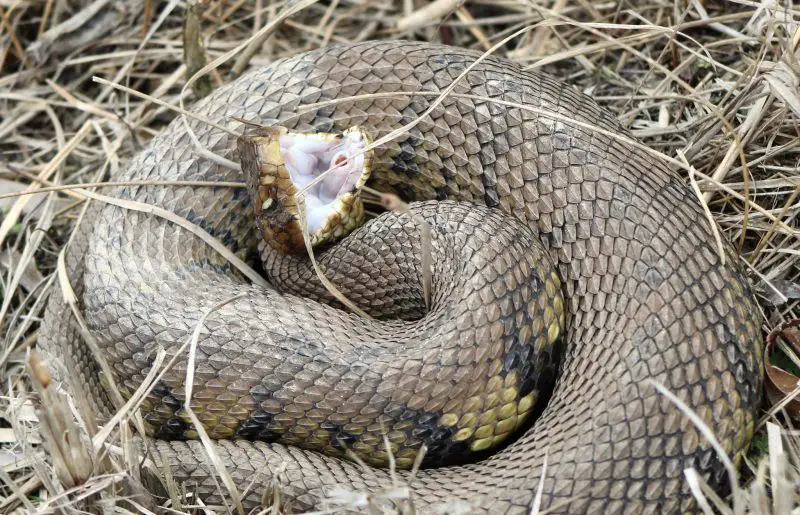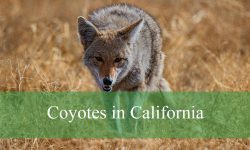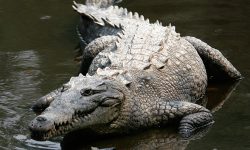Louisiana’s swamps, bayous, and cypress-filled wetlands are home to some of the most iconic wildlife in the American South. From alligators gliding through murky waters to herons standing motionless in the reeds, the state teems with life adapted to its humid environment. Yet among all of these creatures, few inspire as much fear—or misunderstanding—as the water moccasin, also known as the cottonmouth snake.
Locals and visitors alike often tell tales of aggressive, venomous snakes chasing boaters or lurking under docks, waiting to strike. These stories have been passed down for generations, creating an image of the water moccasin as one of the most dangerous snakes in the United States. But are these chilling tales true? Are water moccasins in Louisiana truly as dangerous as people say?
In this in-depth guide, we’ll separate fact from fiction. We’ll explore what water moccasins really are, where they live in Louisiana, how venomous they actually are, what to do if you encounter one, and how to stay safe in snake territory. By the end, you’ll know the truth about these misunderstood reptiles and their vital role in Louisiana’s wetland ecosystem.
What Exactly Is a Water Moccasin?

Understanding the Species
The term “water moccasin” refers to the cottonmouth snake (Agkistrodon piscivorus), a species of venomous pit viper found throughout the southeastern United States. The name “cottonmouth” comes from the bright white interior of its mouth, which it displays as a warning when threatened. This defensive posture—mouth wide open and body coiled—has helped fuel the snake’s menacing reputation.
Water moccasins are semi-aquatic, meaning they live both in and around water. They are commonly found near slow-moving rivers, lakes, ponds, marshes, and, of course, Louisiana’s famous bayous. Unlike many snakes that avoid swimming, cottonmouths are strong swimmers and can remain submerged for long periods while hunting or escaping predators.
Physical Appearance
Adult water moccasins typically measure between 2.5 and 4 feet in length, though some older individuals can exceed 5 feet. Their bodies are thick and muscular with a large, triangular head distinct from the neck—a common trait of pit vipers. The coloration ranges from dark olive to brown or black, often with faint crossbands that may fade with age. Younger snakes tend to have brighter patterns and yellow-tipped tails, which they wiggle to attract prey.
Their eyes are another identifying feature—vertical, cat-like pupils that adjust to varying light levels, helping them hunt efficiently both day and night.
Where to Find Water Moccasins in Louisiana
Common Habitats
Louisiana’s humid, water-rich landscape is ideal for cottonmouths. They can be found across much of the state, especially in:
- Southern swamps and marshes near New Orleans, Houma, and Lafourche Parish.
- Northern wetlands and lakes in parishes like Caddo, Bossier, and Ouachita.
- Along the Mississippi River and its many tributaries.
- In the Atchafalaya Basin, one of the largest wetland areas in the U.S., home to thriving cottonmouth populations.
They prefer environments with dense vegetation, fallen logs, or debris, providing cover for ambush hunting and shelter from predators. Because Louisiana offers a near-perfect combination of warm temperatures, high humidity, and abundant prey, the state has one of the densest populations of water moccasins in the country.
Seasonal Activity
Cottonmouths are most active from April through October, when temperatures range from the mid-70s to upper 90s Fahrenheit. During cooler months, they brumate (a reptile version of hibernation) in burrows or crevices near the waterline. In Louisiana’s mild winters, however, they may still emerge on sunny days to bask.
Behavior: Aggressive or Misunderstood?
The Truth About Aggression
One of the biggest myths about water moccasins is that they are aggressive toward humans. The truth? They are defensive, not aggressive. Studies show that cottonmouths prefer to flee or remain motionless when threatened rather than strike.
In fact, herpetologists conducting field studies have found that these snakes often try to avoid confrontation. When approached, they may open their mouths to show the white lining—a warning display meant to scare away intruders. If that doesn’t work, they may hiss or vibrate their tails, mimicking rattlesnakes. Striking is typically the last resort.
When They Might Bite
Water moccasins usually bite only when:
- They are stepped on or accidentally provoked.
- Someone tries to handle or capture them.
- They feel cornered with no escape route.
Most bites occur because people mistake them for non-venomous water snakes and attempt to pick them up or kill them. Observing from a safe distance is always the best choice.
How Dangerous Is the Venom?
Venom Composition
Water moccasin venom is hemotoxic, meaning it destroys tissue and blood cells. It can cause pain, swelling, blistering, and in severe cases, necrosis (tissue death) near the bite area. Immediate medical treatment is crucial to prevent complications.
However, fatalities are extremely rare. According to the Centers for Disease Control and Prevention (CDC), snakebites from all species combined cause fewer than 10 deaths per year in the United States. Modern antivenoms and advanced emergency care make recovery likely if treated quickly.
Comparing to Other Venomous Snakes
In terms of potency, cottonmouth venom is less toxic than that of rattlesnakes but stronger than that of copperheads. What makes it dangerous is the volume of venom injected—adults can deliver more in a single strike than smaller species. Yet again, most encounters do not result in bites because these snakes prefer to avoid humans.
The Role of Water Moccasins in Louisiana’s Ecosystem
Nature’s Pest Control
Water moccasins play an important role in maintaining ecological balance. They help control populations of small mammals, amphibians, and fish, preventing overpopulation and crop damage. Without them, rodent numbers could rise dramatically, affecting both farms and natural wetlands.
Prey and Predators
Though venomous, cottonmouths are not invincible. They are preyed upon by large birds such as herons and hawks, as well as alligators and raccoons. Young snakes face high mortality rates, often falling victim to other reptiles or even larger cottonmouths.
Indicator Species
Because they are sensitive to pollution and environmental changes, water moccasins act as bioindicators—their presence (or absence) signals the health of Louisiana’s wetland ecosystems.
Misidentification: Cottonmouths vs. Water Snakes
Common Confusion
Many non-venomous water snakes live alongside cottonmouths in Louisiana, and they are frequently mistaken for one another. The most common lookalikes include the Northern water snake and the banded water snake.
To tell them apart:
- Head Shape: Water moccasins have a broad, triangular head, while water snakes have a rounder one.
- Pupils: Cottonmouths have vertical, slit-like pupils; water snakes’ pupils are round.
- Behavior: Water snakes flee quickly when approached, while cottonmouths may stand their ground and gape their mouths.
Knowing these differences can prevent unnecessary fear—or harm to harmless species.
Staying Safe Around Water Moccasins
Safety Tips for Outdoor Enthusiasts
If you live in or visit Louisiana, especially around wetlands, follow these safety tips:
- Watch your step. Always check where you walk, especially near water or tall grass.
- Wear boots. Snake-proof boots offer strong protection.
- Avoid reaching into logs or holes. Snakes often use these as shelter.
- Stay calm if you encounter one. Back away slowly; don’t run or attempt to kill it.
- Educate children. Teach them to respect wildlife and avoid disturbing snakes.
What to Do If Bitten
If bitten, remain calm. Try to identify the snake from a distance but do not attempt to catch or kill it. Call emergency services or go to the nearest hospital immediately. Keep the affected limb immobilized and lower than your heart, and avoid applying ice or a tourniquet. Modern antivenoms are highly effective when administered quickly.
Myths vs. Facts About Water Moccasins in Louisiana
Myth |
Reality |
|---|---|
Water moccasins chase people. |
False. They only act defensively and prefer retreat. |
Their venom is always fatal. |
False. With prompt medical care, survival rates are over 99%. |
They live only in deep swamps. |
False. They can also be found near lakes, ditches, and flooded fields. |
Killing them helps reduce danger. |
False. They control pests and rarely pose real threats to humans. |
Human Encounters and Conservation
Fear and Misunderstanding
Because of their ominous appearance and slow, deliberate movement, water moccasins are often killed on sight. Yet these snakes are essential to Louisiana’s wetland ecosystems. Eliminating them disrupts natural food chains and increases pest populations.
Conservation Efforts
Wildlife agencies in Louisiana emphasize education over eradication. Through outreach programs, guided tours, and public awareness campaigns, they aim to help residents distinguish myth from fact. Protecting native snake species, even venomous ones, ensures a balanced environment for all wildlife.
FAQs About Water Moccasins in Louisiana
Are water moccasins aggressive toward people?
No. They are defensive, not aggressive. Most will flee or display their white mouths as a warning before striking.
How venomous are they compared to rattlesnakes?
Their venom is less potent than most rattlesnakes but can still cause serious tissue damage. Immediate medical care is crucial.
Where are water moccasins most common in Louisiana?
They thrive in the southern and central regions—particularly the Atchafalaya Basin, Mississippi River Delta, and Lake Pontchartrain areas.
Do water moccasins chase people or boats?
No credible evidence supports this. They may appear to approach when swimming but are usually just navigating toward cover.
How can I tell a cottonmouth from a harmless water snake?
Look for the triangular head, vertical pupils, and white mouth interior when threatened. Harmless water snakes have round pupils and slender heads.
What should I do if I see one near my property?
Leave it alone. Most will move on if undisturbed. If it poses a risk, contact local animal control or a wildlife expert for safe relocation.
Are they protected in Louisiana?
While not endangered, they are an important native species and are protected from unnecessary killing under many local wildlife regulations.
Conclusion
So, are water moccasins in Louisiana as dangerous as people say? The answer is no—not if you understand and respect them. Though venomous and capable of inflicting painful bites, these snakes are far from the aggressive monsters of folklore. They are cautious, efficient predators that play an essential role in Louisiana’s delicate wetland ecosystems.
By learning the truth and debunking myths, we can coexist peacefully with these remarkable reptiles. Whether you’re boating through the Atchafalaya Basin or hiking near a Louisiana swamp, remember: water moccasins aren’t out to harm you—they’re simply surviving, just like every other creature that calls the bayou home.






